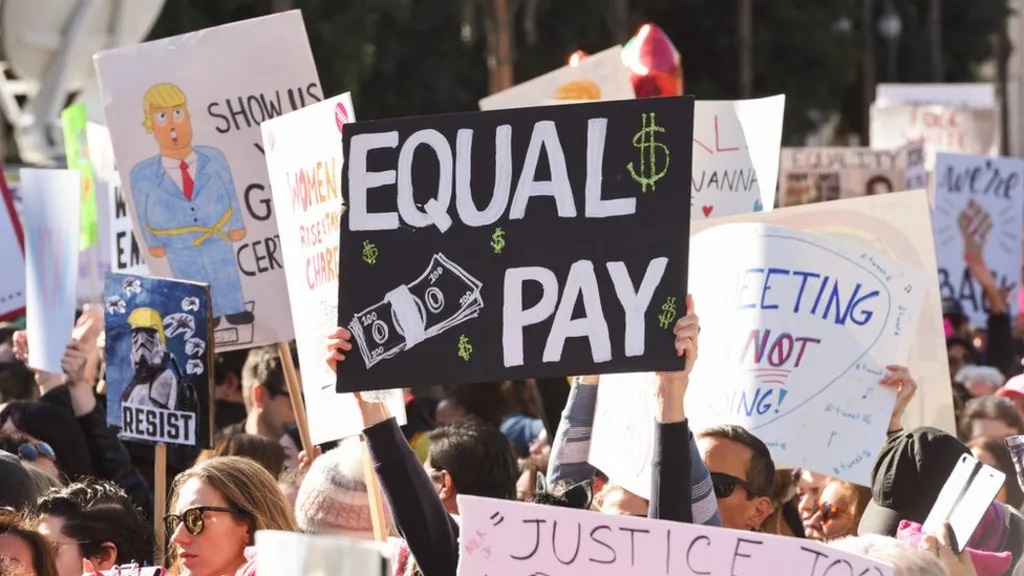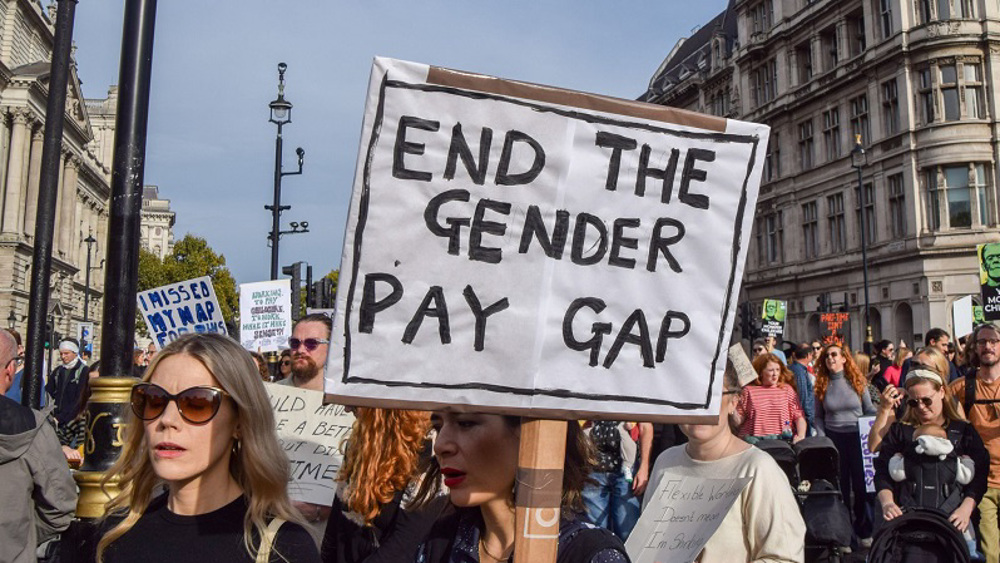The wage gap costs women in the U.S. about $1.6 trillion a year, according to a newly released report by the Economic Policy Institute.
In 2022, according to the National Partnership for Women and Families, women earned 82 cents for every dollar that men made. Researchers calculated the total cost to women of the wage gap by using statistics from the U.S. Census Bureau, specifically data on all women who worked, whether in full- or part-time jobs, and those who took time off for illness or caregiving.
In truth though, that’s a big leap from the 65 cents that women were earning in 1982. But it has barely moved from the 80 cents they were earning in 2002.

Some places in America are trying a new approach to close the gender pay gap. Credit:BBC
Higher education, a shift to higher-paying occupations and more labor market experience have helped women narrow the gender pay gap since 1982,” the EPI report noted. “But even as women have continued to outpace men in educational attainment, the pay gap has been stuck in a holding pattern since 2002, ranging from 80 to 85 cents to the dollar.”
Before getting to potential reasons why the pay gap hasn’t narrowed for two decades — let alone disappeared — it’s worth noting that the top-line average doesn’t tell the whole story of what’s been going on for women in different cohorts.
Using age as an example, women between the ages of 25 and 34 are much closer to achieving pay parity with men than they are likely to be when they get older.
Since 2007, younger women have been earning about 90 cents on the dollar, according to the EPI. “But even as pay parity might appear in reach for women at the start of their careers, the wage gap tends to increase as they age.”
Having children is a factor, the EPI found. For example, parenthood leads some women to put their careers on hold, or put in a shorter workweek. For employed fathers between the ages 35 and 44, having children at home is a time that often coincides with receiving higher pay even though the pay of employed mothers that are the same age is unaffected.
In 2022, mothers ages 25 to 34 earned 85% as much as fathers that age, but women without children at home earned 97% as much as fathers. In contrast, employed women ages 35 to 44 — with or without children — both earned about 80% as much as fathers,” the report said.
Looking at it from the race and ethnicity angle, EPI found that Black women in 2022 earned just 70% as much as White men. Hispanic women earned 65% as much. For White women, the gap was less, at 83%. Asian women were closest to parity, at 93%.
To some extent, the gender wage gap varies by race and ethnicity because of differences in education, experience, occupation and other factors that drive the gender wage gap for women overall,” the EPI analysis noted.
Researchers have also uncovered new evidence of hiring discrimination against various racial and ethnic groups, along with discrimination against other groups, such as LGBTQ and disabled workers,” the report continued. “Discrimination in hiring may feed into differences in earnings by shutting out workers from opportunities.
Another factor to consider is occupation. Women are still overrepresented in lower-paying occupations such as personal care and service jobs; and underrepresented in higher-paying ones, like managerial and STEM jobs.
Regardless, the gender pay gap is typically narrowest when you pick any single occupation and control for measurable factors between men and women like education, tenure and hours worked.

Gender Pay inequality protests continue to be on the increase all over the country. Credit: LA Times
The persistence of a gap over the past 20 years, even when comparing apples to apples, suggests there are other factors at play.
These can include potential discrimination. When the EPI asked Americans in November 2023 what factors they believed played a role in the gender wage gap, half indicated a major reason is that employers treat women differently. Women were much more likely than men (61% vs 37%) to cite this as a major reason.
Another factor that may help explain the stickiness of the pay gap is that the wage premium for those with college degrees has grown smaller. So while more employed women (48%) now have at least a bachelor’s degree than men (41%), it is worth less.
Individual choices such as taking periods away from the workforce to care for children also continue to play a role. Those choices may be borne of cultural norms, societal issues such as a lack of affordable child care, or personal preference.
Narrowing the gender pay gap from here may be tough sledding.
And even then, progress may be slower than desired, since, as they noted, “even in countries that have taken the lead in implementing family-friendly policies, such as Denmark, Sweden and Norway, parenthood continues to drive a significant wedge in the earnings of men and women.”






